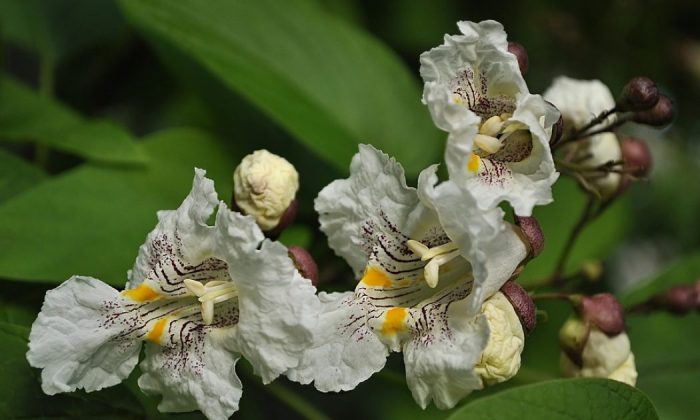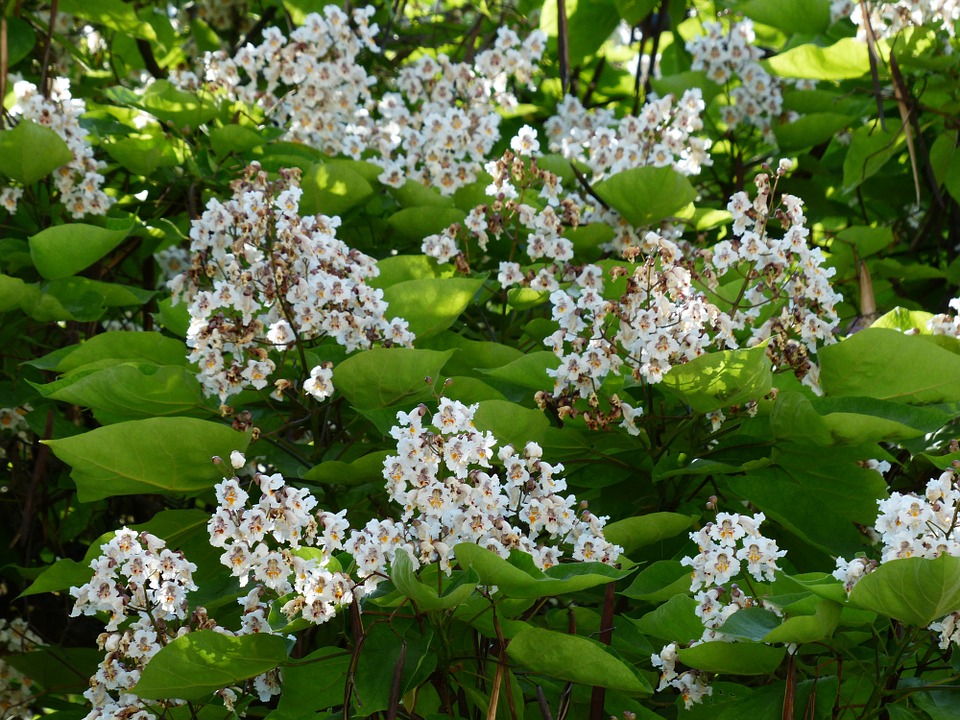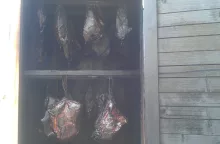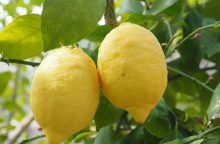Catalpa – get rid of unpleasant insect and enjoy beautiful flowers

Catalpa is a beautiful plant with large leaves and lots of beautiful, fragrant flowers. If you want one in your garden, go for catalpa bignonioides, because this type will grow well in our corner of the world. This plant comes from the southern part of North America. Other types come from the tropics and are not suitable for Europe. Catalpa is a tree that does not mind polluted air, which makes it an ideal plant for cities…
What does a catalpa look like?
It is a tree that grows very slowly. Even at ten years old, the tree is about 2 to 3 meters tall, and at twenty years it is about 5 meters tall. It grows very slowly, but it can grow up to 20 meters – it just takes a little longer. Catalpa smells like tobacco and many insects, such as mosquitoes, do not like this smell so, it is a great candidate for your garden, especially for places where you want to get rid of unpleasant insect.
Photo: Pixabay
Great for hot summer weather
Catalpa has large and beautiful leaves through which large amounts of water evaporate. Thanks to this action catalpa humidifies and cools the surrounding air and it is therefore an ideal partner for hot summer days. Catalpa begins to flower in June and July and produces white, yellow or purple speckled flowers. Flowers are arranged in a pyramidal raceme (similar to chestnuts for example) about 20 cm in size. After flowering, the plant produces capsules about 45 cm long which are used in various dry flower bouquets. These capsules give out an unpleasant smell when broken, and if you leave them on the tree, they will last there until the spring.
Different types of catalpa
You can buy large types of catalpa for around 8 euros. If you have a smaller garden and prefer a smaller variety, you can buy the Nana cultivar but this one does not produce any flowers . The price is much higher (approximately 80 euros) but it will grow only straight upwards and not sideways, so it will not take much space around itself. You can also choose a multi-stemmed catalpa, which looks like a bush.
No known diseases
A great advantage of catalpa is that it does not suffer from any diseases and no pests like it. If you see leaves turning pale just add magnesium sulphate (sprayed on leaves or added it to watering). You can also sprinkle the magnesium sulphate around the tree and catalpa will be able to better absorb important nutrients from the soil.
Preview photo: Pixabay

Gardening is my hobby, I have a lot of experience and I am happy to share it.









0 comments